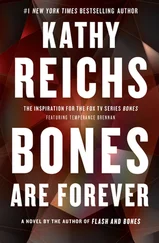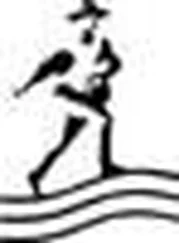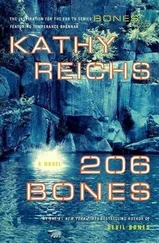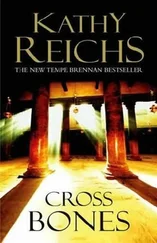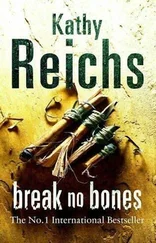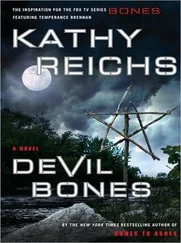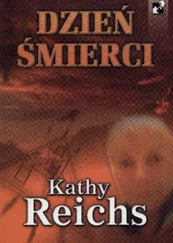In the season five Bones episode that I wrote, “The Witch in the Wardrobe,” two sets of remains are discovered in a burned-out house. The witch in the wardrobe turns out to have been dead for quite some time. A story. The witch under the foundation is identified as a recent homicide victim. B story. Angela and Hodgins go to jail (and love rekindles). C story. The structures are very similar, you see.
On the other hand, a novel and a script differ in many ways. For example, with film or television there’s no need for detailed description of setting or action. Those features are right there in front of your eyes. A screenplay or teleplay is all about dialogue, character, and story line.
Another difference involves the creative experience. When I write a novel, I am the stereotypical loner working at my keyboard in isolation. No one helps me. No one approves or disapproves my work. Not so the television writer.
Once a story idea (kind of like my “nugget” concept) is accepted, the next step is called “breaking the story.” For one to three weeks the entire Bones writing staff brainstorms together, hammering out an outline act by act, scene by scene, working on erasable white boards that cover the walls of the writers’ room. The process is collective, and it is exhilarating.
(The Bones writing team is awesome. Josh Berman, Pat Charles, Carla Kettner, Janet Lin, Dean Lopata, Michael Peterson, Karine Rosenthal, Karyn Usher. Thanks for your patience, guys.)
The completed script outline is then “pitched”—in the case of Bones to Hart Hanson, our genius creator and executive producer.
Once the outline is approved, the writer then “goes to script.” That means back to the lonely keyboard to produce what is called the writer’s draft. That stage takes one to three weeks. Unless the show is behind schedule. In that case, well, good luck.
Then there are rewrites. And more rewrites. Studio draft. Network draft. Production draft.
In the end it is amazing to see your episode actually being shot, with all the actors, the director, the gaffers, the grips, and the best boys. Lights! Camera! Action!
Almost as amazing as seeing your baby on the printed page.
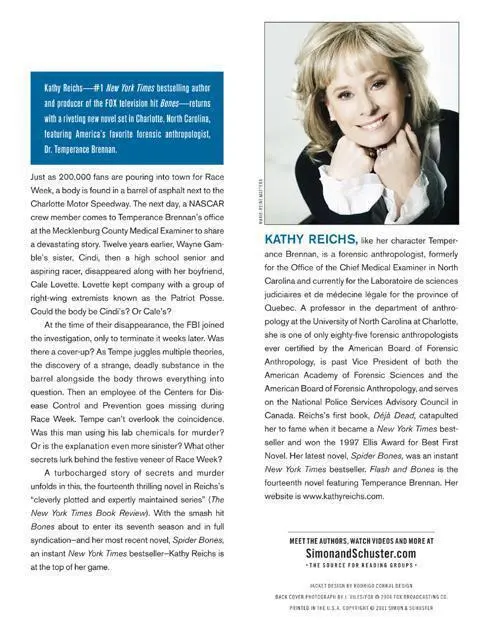
Table of Contents
Acknowledgments
Chapter 1
Chapter 2
Chapter 3
Chapter 4
Chapter 5
Chapter 6
Chapter 7
Chapter 8
Chapter 9
Chapter 10
Chapter 11
Chapter 12
Chapter 13
Chapter 14
Chapter 15
Chapter 16
Chapter 17
Chapter 18
Chapter 19
Chapter 20
Chapter 21
Chapter 22
Chapter 23
Chapter 24
Chapter 25
Chapter 26
Chapter 27
Chapter 28
Chapter 29
Chapter 30
Chapter 31
Chapter 32
Chapter 33
Chapter 34
Chapter 35
Chapter 36
Table of Contents
Acknowledgments
Chapter 1
Chapter 2
Chapter 3
Chapter 4
Chapter 5
Chapter 6
Chapter 7
Chapter 8
Chapter 9
Chapter 10
Chapter 11
Chapter 12
Chapter 13
Chapter 14
Chapter 15
Chapter 16
Chapter 17
Chapter 18
Chapter 19
Chapter 20
Chapter 21
Chapter 22
Chapter 23
Chapter 24
Chapter 25
Chapter 26
Chapter 27
Chapter 28
Chapter 29
Chapter 30
Chapter 31
Chapter 32
Chapter 33
Chapter 34
Chapter 35
Chapter 36


